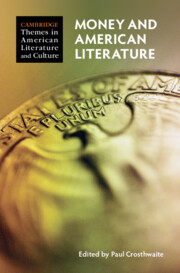Refine search
Actions for selected content:
218 results
The Vibrancy of Ruins in Ancient Mesoamerica
-
- Journal:
- Latin American Antiquity , First View
- Published online by Cambridge University Press:
- 20 November 2025, pp. 1-15
-
- Article
-
- You have access
- Open access
- HTML
- Export citation
9 - The Birth of Code/Body
- from Part II - Living the Digital Life
-
-
- Book:
- Being Human in the Digital World
- Published online:
- 11 November 2025
- Print publication:
- 20 November 2025, pp 129-142
-
- Chapter
-
- You have access
- Open access
- HTML
- Export citation
Built Space, Written Space: Baroque Spatialities between Architecture and Text in Lucan, Statius, and the Palaces of Imperial Rome
-
- Journal:
- Antichthon , First View
- Published online by Cambridge University Press:
- 27 October 2025, pp. 1-29
-
- Article
- Export citation
13 - Public–Private Cooperation in Global Security Governance
-
-
- Book:
- International Organizations Engaging the World
- Published online:
- 09 October 2025
- Print publication:
- 23 October 2025, pp 243-266
-
- Chapter
-
- You have access
- Open access
- HTML
- Export citation
Chapter 16 - Bloomsbury, Nudity, and Race
- from Part III - Intimate Bloomsbury
-
-
- Book:
- A History of the Bloomsbury Group
- Published online:
- 09 October 2025
- Print publication:
- 23 October 2025, pp 259-279
-
- Chapter
- Export citation
5 - English Manuscript Traditions
- from Part I - The Textual Record
-
-
- Book:
- The New Cambridge History of the English Language
- Published online:
- 18 October 2025
- Print publication:
- 16 October 2025, pp 127-153
-
- Chapter
- Export citation
The Archive of Displacement: Vernacular History and Urban Cemeteries in Oran, Algeria
-
- Journal:
- Comparative Studies in Society and History , First View
- Published online by Cambridge University Press:
- 26 September 2025, pp. 1-28
-
- Article
-
- You have access
- Open access
- HTML
- Export citation
1 - Ancient Relief
-
-
- Book:
- Relief in Greek, Roman, and Late Antique Art
- Published online:
- 11 October 2025
- Print publication:
- 25 September 2025, pp 28-64
-
- Chapter
- Export citation
Chapter Nine - Conclusion
-
- Book:
- The Archaeology of Pastoralism, Mobility, and Society
- Published online:
- 04 September 2025
- Print publication:
- 18 September 2025, pp 332-346
-
- Chapter
- Export citation
Chapter 7 - Outside Postmodernism
-
-
- Book:
- The Cambridge Companion to British Postmodern Fiction
- Published online:
- 07 August 2025
- Print publication:
- 21 August 2025, pp 113-128
-
- Chapter
- Export citation
SAPPHO IN JULIUS POLLUX’S ONOMASTICON: A MATERIAL GIRL IN A MATERIAL WORLD
-
- Journal:
- The Classical Quarterly , First View
- Published online by Cambridge University Press:
- 15 August 2025, pp. 1-16
-
- Article
-
- You have access
- Open access
- HTML
- Export citation
8 - Material Language Culture between Ideologies of Fixity and Resistance
- from Part II - Constructing Languages through Discourses on Belonging, Prestige, and Materiality
-
- Book:
- Liquid Languages
- Published online:
- 28 July 2025
- Print publication:
- 14 August 2025, pp 160-194
-
- Chapter
- Export citation
2 - Constructing Languages, Constructing Social Life
- from Part I - Theoretical Background and Setting
-
- Book:
- Liquid Languages
- Published online:
- 28 July 2025
- Print publication:
- 14 August 2025, pp 15-37
-
- Chapter
- Export citation
Aboard the ‘Commonist Lifeboat’: Metaphor, custom, materiality: Response to Itamar Mann Agora
-
- Journal:
- Global Constitutionalism , First View
- Published online by Cambridge University Press:
- 13 August 2025, pp. 1-7
-
- Article
-
- You have access
- Open access
- HTML
- Export citation

Money and American Literature
-
- Published online:
- 03 July 2025
- Print publication:
- 17 July 2025
Materiality in Transition: Challenges and Opportunities in Corporate Sustainability Reporting under the CSRD
-
- Journal:
- European Journal of Risk Regulation / Volume 16 / Issue 3 / September 2025
- Published online by Cambridge University Press:
- 13 June 2025, pp. 927-941
-
- Article
-
- You have access
- Open access
- HTML
- Export citation
Chapter 8 - Payments and Hegemony
- from Part I - Conceptual Approaches
-
-
- Book:
- The Cambridge Global Handbook of Financial Infrastructure
- Published online:
- 21 May 2025
- Print publication:
- 05 June 2025, pp 88-100
-
- Chapter
-
- You have access
- Open access
- HTML
- Export citation
Chapter 9 - Postcolonial Space
- from Part II - Developments
-
-
- Book:
- Space and Literary Studies
- Published online:
- 07 May 2025
- Print publication:
- 22 May 2025, pp 156-171
-
- Chapter
- Export citation
Introduction
-
- Book:
- Fair Trade
- Published online:
- 01 May 2025
- Print publication:
- 15 May 2025, pp 1-18
-
- Chapter
- Export citation
Digitised Sources, Materiality and ‘Interim Archives’: Archive Encounters in Asia and the United Kingdom
- Part of
-
- Journal:
- Transactions of the Royal Historical Society / Volume 3 / December 2025
- Published online by Cambridge University Press:
- 25 April 2025, pp. 363-375
- Print publication:
- December 2025
-
- Article
-
- You have access
- Open access
- HTML
- Export citation
